Colubrina elliptica: Mauby has Moxie
First there was Moxie, then Mauby… actually it was historically the other way around though few until now would know that. You read it here first.
Moxie is a soft drink invented by a fellow Mainer Augustin Thompson living in Lowell, Massachusetts in 1876. It is the official drink of the state of Maine, as of 2005. (There is an annual Moxie Chugging Challenge in July. Thanks for the tip off, Kate.) Moxie was the nation’s first soft drink and brilliantly marketed by Frank Archer. “Pioneering” marketing would be an apt description. At one time around WWI, Moxie out sold Coca Cola. However, Moxie did not advertise during the first Great Depression and never recovered its huge market share.
First sold as a medicine, then as a soft drink, Moxie’s still available. President Coolidge liked Moxie as did comedian Ed Wynn and songster George M. Cohan. Slugger Ted Williams was a spokesman for the drink and the oh-so-correct writer “eb white” drank it. He wrote: “Moxie contains gentian root, which is the path to the good life.” The Moxie formula has been changed at least three times and probably originally had cocaine in it as did Coca-Cola.
Drinking Moxie is a rite of passage for most New Englanders. The initial flavor is similar to root beer — sweet — but then a vigorous bitter aftertaste kicks in and makes itself to home. To like Moxie you have to like bitter flavors. That would be the end of the Moxie story while on the way to talk about Mauby. But there may be more to it than Thompson simply inventing Moxie one day in New England.
You see Augustin Thompson was going to become a doctor. However first he was in the Maine Volunteer Infantry in the Civil War, became a captain, and saw action at the siege of Port Hudson in Donaldsonville, Louisiana, as well as minor action at Fort Pickens in Pensacola, Florida. To the point, he served in the Deep South. Later he was given the rank of lieutenant colonel by an act of Congress… that took Moxie.
After the war he went to what was then a homoeopathic medical school in Philadelphia, graduated with honors at the top of his class, and settled in Lowell, Mass., setting up a practice in 1867. Within 20 years he was the most popular doctor in New England and had the largest client list. But he had a different ambition: Selling his “nerve tonic” Moxie. Patent medicines said to be based on native formulas were hot back then — the back-to-nature health movement of its day. Early marketing says he released tonic as a syrup in 1884. As a syrup it was to be taken before meals to aid digestion. Thompson got a trade mark for it in 1885 as a carbonated beverage. As a drink it was a “refreshing” tonic. In 1906 Moxie was forced to drop medicinal claims, three years after the doctor died. Now enter Mauby.
Mauby is a drink strikingly similar to Moxie but is made from one of two related trees native to Florida and the Caribbean. Mauby is sweet and bitter, made as a concentrate or a fizzy drink, and is taken to aid digestion. Mauby, or at least the trees it comes from, are mentioned by botanists as early as 1760 and Mauby was certainly a drink among Blacks by the Civil War in Louisiana and Florida. The intrigue does not stop there.
A mysterious Lieutenant “Moxie” supposedly brought Dr. Thompson some ingredients from South America and it was from them the soft drink was born. According to an early bottle label, Moxie was named after said Lieutenant who discovered the active ingredient, “a simple sugarcane-like plant grown near the Equator and farther south.” But Dr. Frederic Cassidy, editor of the Dictionary of American Regional English, said he thought the lieutenant and the plant may be inventions. No Civil War record of a Lieutenant Moxie has ever been found. Cassidy suggested Thompson could have gotten the name of his tonic from a plant called a moxie-berry (Chiogenes serpyllifolia.) It is one of the very rare white berries one can eat. The Algonquins called it Maski, the cognate for Moxie. It was used by atives and settlers, to make a medicinal tea. There are several “Moxi” place names in New England and Thompson could have easily adopted the name. And since Moxie is close to Mauby, it was a good fit.
Mauby/Moxie, Thompson serving in Louisiana and Florida, a mysterious lieutenant, secret ingredient from South America… Is there a connection between Mauby and Moxie? It’s not an unreasonable question. If no connections then there are certainly several coincidences. Interestingly, Dr. Thompson called his concoction a delicious blend of bitter and sweet, exactly what the aficionados of Mauby call it today. Both Mauby and Moxie taste similar to root beer with angostura bitters added.
Commercial Mauby is made from the Snakewood Tree, botanically Colubrina ellliptica. Locals also call it Nakedwood, Greenheart, Hogplum and a long list of other names in modern and ancient languages. We will go with Snakewood because its bark kind of grow in a wriggly manner as do its stamens. Colubrina (kho-lew-BREE-nuh) is Latin for snake-like” Elliptica (ee-LIP-tih-kuh) refers to the oval leaves of that tree, read twice as long as wide. Arborescens, (ar-bor-ESS-enz.) means becoming woody, tree-like.
To make Mauby the bark is brewed with spices and brown sugar. Skimmed of froth, yeast from a previous batch is added and only allowed to ferment a day or two, preferences vary. Some don’t ferment it at all, other let it become a full-blown truly bitter beer. Usually it is served as a home-made soft drink. Think of it as a Caribbean comfort food with each family handing down its own recipe. Besides being a bit of family legacy it is a very popular commercial product sold on the streets and for home use. There is also some suggestion it can lower high blood pressure.
When you read the Mauby ingredients in the recipes, particularly of the second one, remember the description by commentator and Moxie fan Danny Schlozman of what Moxie tastes like: “The sarsaparilla tones come to the fore, although not quite so strongly as in root beer — one might claim a resemblance with ginger ale. As these flavors recede, vaguely fruity flavors (think cough syrup, say the detractors) combine with an overtone of wintergreen to produce a spicy mouth-feel. Finally comes the vaunted aftertaste, powerfully bitter with a hint of cinnamon and a touch of nutmeg.”
When President Warren Harding died in 1923, Vice President, Calvin Coolidge, was at the family farm in Vermont bailing hay. The telegraph message arrived at 2 a.m. with the news. John Coolidge, Cal’s father and justice of the peace, swore in his son as President of the United States. They toasted the event with Moxie(it was during Prohibition.)
For the recipes below you can get the bark at Caribbean or Puerto Rican markets. You can also buy concentrate but it is considered more bitter and medicinal tasting. If you collect the bark in the wild, it comes off the tree easily with no harm to the tree because is exfoliates all the time. The preferred tree is C. ellliptica however C. arborescens can be used the same way. The latter is rare so be careful.
At right is former President George W. Bush with US Senator Olympia Snowe of Maine and a Moxie T-shirt. There is a bit of a connection between Green Deane and Senator Snow. When just a child, Senator Snow lost first her mother then a short time later her father. She went to live with her uncle and his wife Maria Karantzalis whom Olympia called “Thia” which means “aunt.” Maria is a cousin of Green Deane on his grandmother side, Anastasia Karantzalis, from Konakia, Greece, in The Mani.
Here are two recipes, the quick and the involved:
Quickie Mauby
Ingredients:
1/2 oz Snakewood bark
2 short cinnamon sticks (about two inches, as sold)
3 quarts Water
1 tablespoon Orange Peel
4 clove Cloves
Directions:
Boil the bark, orange peel, cinnamon spice and cloves in one cup of water for about 10 minutes. Let cool and add water and sugar. Brew for about 5 minutes. Strain and place in jug, refrigerate for two days. Serve chilled. Non-alcoholic, non-fizzy, which is the most common way served.
More involved Mauby
Flavor Ingredients:
1 ounce dry Snakewood bark
2 sticks cinnamon (short)
2 bay leaves
2 tablesppons fresh rosemary
2 teaspoons dried marjoram
2 pods star anise
2 cloves
1/4 tsp. grated nutmeg
3 cups water
Bring the three cups to a boil and simmer all ingredients for 10 minutes,
Strain, saving the bark. Put strained liquid into a container that will hold
three gallons. Add the boiled bark.
Sweetening ingredients
4 cups sugar
10 cups water
Heat the four cups of sugar in 10 cups of water. You can use white sugar, brown sugar or half and half. All brown sugar imparts sweetness and another layer of flavor. Allow it to cool. Pour into the three gallon container. Use a half a cup of starter from a previous batch (that you fed and kept in the frig) or add a packet of beer yeast. Yes you can use bread yeast, but it will change the flavor slightly. If you are going to use bread yeast, bread machine yeast works better. Put on a fermentation lock or cover with a clean towel. You can bottle it in a day, two is recommended, some wait for five days. If you want it fizzy you will have to use bottle made for holding pressure, such as champagne bottles, or sturdy plastic soda bottles. If you don’t want it too fizzy, keep the caps loose enough to let gas escape. Store in the frig. Serve over Ice.
Green Deane’s “Itemized” Plant Profile
IDENTIFICATION: Scrub or tree to 60 feet, with orange-brown bark, flaking in loose, curling scales, old trees have deep, serpentine furrows. Leaves alternate, ovate to elliptic, tapering to a blunt tip, two to four inches long, thin and soft. Flowers, small, greenish yellow, five petaled, fruit a scarlet capsule, three lobed, to a quarter-inch wide, one black seed. C. arborescens has brown fuzz on its branches, leaves and flowers, and a purple-black fruit.
TIME OF YEAR: Year round
ENVIRONMENT: Hammocks
METHOD OF PREPARATION: Bark of either made into drink called Mabi Champan in the Virgin Islands. Leaves from C. arborescens can also be use soap.

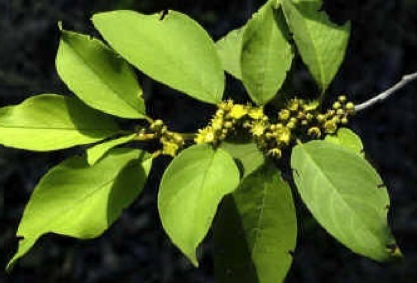

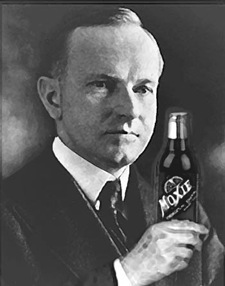
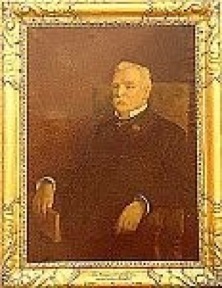
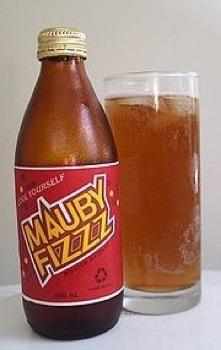
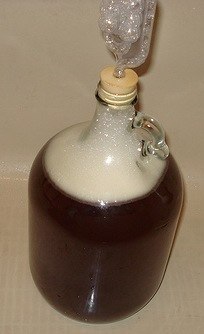
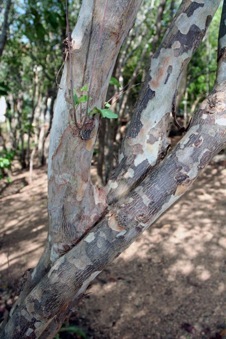


Thanks for the impressive article and recipes, it is worth a bottle of homemade mauby! Do you know of any place that sells the tree seeds? In the meantime, an extra batch shall be brewed for you, if you ever come by Orlando…
Hi Joyce I’m in PR. I do have a Maubi tree and I might be able to provide you seeds. I do want to harvest the bark but I find that is has fungus is that normal? I also go visit Kissimmee regularly so lets be entoch. Always Ruth
Hi Ruth,
I understand you have a mauby tree. I am looking for seeds as well to start an agriculture project on St. Maarten. Can you refer me where I can get mauby tree seeds?
Please advise?
Kind regards,
Cee
super!c”est à mon avis la seule boisson qui pourrait concurrencer le coca cola! ..! moi je suis forestier et pépinieriste et j”ai planté autour de ma maison toutes ses essences qui sont le patrimoine des premiers habitants des caraibes et des ameriques tropicales.
(translation) Super! It is in my opinion the only drink that could compete with coca cola! I into plants and raising them and I have planted around my house for all the species that are part of the heritage of the original inhabitants of the Caribbean and tropical Americas.
Mauby is such a wonderful drink. Recently I have become involved with fermenting drinks so I was happy to find your recipe. However, I do not understand which “previous” batch you are referring to? Is it that we brew some Mauby and then use part of it for fermentation? Thank you…
Yes, like sourdough bread: You use some of the last batch for the new batch.
Hi I had a difficult time finding the Latin Name Chiogenes serpyllifolia it is (also) Gaultheria hispidula a edible ground cover . Chiogenes (looks to be a synonym according to Wikipedia, but wanted to write , because Had problems searching for that full Latin name myself)
(did they change it like they changed the Latin name for Dogwood?)
Well at least out of my confusion I’ve found a new plant trying to figure this all out a Native snow berry Symphoricarpos albus in the Honeysuckle family (also called snowberry) with white berries that are not edible
Your Quote
Cassidy suggested Thompson could have gotten the name of his tonic from a plant called a moxie-berry (Chiogenes serpyllifolia.) It is one of the very rare white berries one can eat.
Hi Also I like bitter stuff Mostly in tea form any other Herbs that grow far up N (zone 5A) that are Bitter or even in the deep S. ?
I already make tea With Curly dock (rumex) for a black tea Substitute Seeds mango seeds (not often just desperation if it’s all I have for both since Dock seeds are full of iron, and have little info of mango seeds being ate in quantity)
if this is a bitter drink or even somewhat that Pop should be used more in bars for mixing drinks.
Oh A traditional black tea flavor would be a plus if you know of those also, and could tell me Thank you For your web site..
I am not too sure about native Hollies in Arizona but Ilex vomitoria is a common ornamental there and when used as a tea (rather than a decoction) is excellent.
Here is another variation and much simpler from the old school in PR and NYC.
Mabí – (mom’s recipe)
6 C Water
1 handful mabi bark (Colubrina elliptica)
1 pinch Flor de Cerveza (beer Hops-Humulus lupulus)
—Bring to a boil—
Simmer for 15 minutes
add:
1 gal cold water
2 C Piés (previously fermented mabí)
If you have no starter, don’t worry. It will just be milder. Save some from this batch as your starter for the next batch.
4 C Brown Sugar
4 C White Sugar
NOTE – DO NOT COVER WITH TIGHT LIDS! The fermentation will create a pressure cooker!
Use a cloth lid to cover. Either put in clean gallon jugs or glass bottles.
Place the bottles in a warm sunny place – and allow to ferment for 4 to 5 days. Then refrigerate and drink ice cold.
I appreciate bitter taste, without some bitterness life and food would be bland and dull. There is much evidence for the immune stimulant effects of bitter flavors.
In Italian amari (bitters) I think I recognize Centaury. I don’t find any mention of the American gentian cousin, Rosepink, Sabatia angularis.
Despite the almost universal references to the contrary, Moxie Nerve Food was not sold commercially until March 1885, and that was in bottles with carbonation. Dr. Thompson may well have distributed syrup to his patients prior to that date, but there is no written evidence of that prior to 1885. Not a shred! Read more in our 2019 Arcadia Publishing book, Moxie. http://www.moxiesoda.com